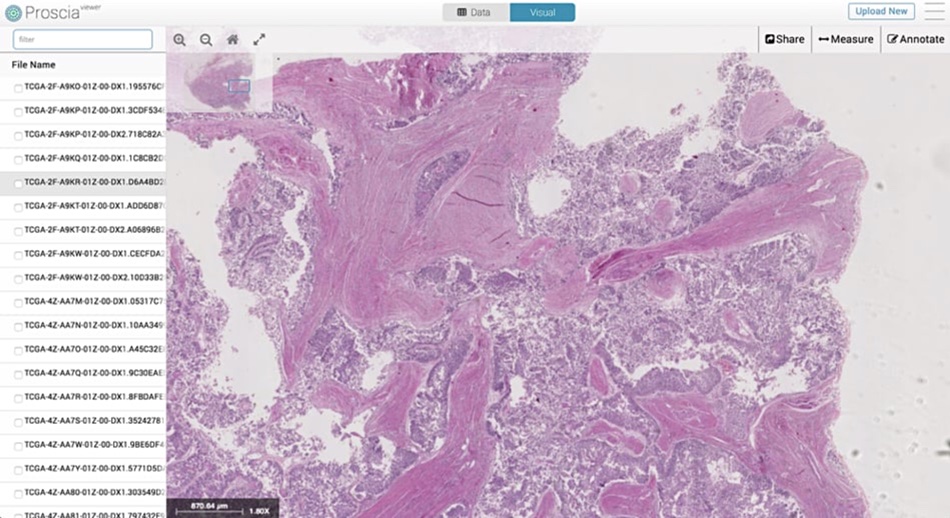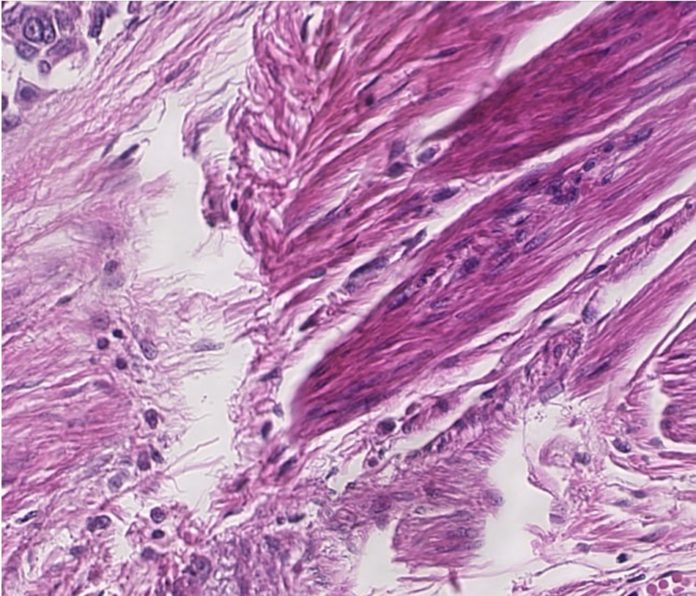Cloud file services vendors – CTERA, Egnyte, Nasuni, Panzura – are meeting new competition in the specialized image digital pathology area in the form of Bulgaria’s Tiger Technology.
Digital pathology refers to images of pathology specimen glass slides. The slides contain small slices of tissue, which may have been stained to highlight specific features. A doctor or other medical professional can inspect them to check for signs of disease or deterioration. Such images are taken by special digital scanners and need to be zoomable to fine detail, as if the viewer was looking through an actual microscope.

Alexander Lefterov, Tiger Tech’s founder and CEO, told B&F: “We are working with different scanning machine vendors and their workflows [for example Phillips]. A module in its scanner talks to our API to access cloud data. We’re middleware vendors and integrate our software with these front-end devices.”
Tiger Technology provides a hybrid multi-cloud file namespace for Windows Servers and enables space-saving file tiering from on-premises servers to cheaper file and object stores with ancillary backup, archive, file sync, business continuity, and disaster recovery benefits. It has several products: Tiger Store on-premises file sharing; Tiger Pool combines multiple volumes into a single pool; Tiger Spaces file sharing among work group members; and the Tiger Bridge cloud storage gateway, syncing and tiering product.
In the digital pathology field, the Tiger Bridge software is integrated with the scanner and enables captured images to be sent to a public cloud repository, from where they can be accessed anywhere in the world. That means remote consultants can check images and help a local medical team come to a patient treatment decision.
There is another reason the images are sent to the cloud. Actual slides containing bio-samples may need to be kept for 10 years or longer and that means they have to be refrigerated to prevent decay and degradation. Refrigeration costs money. A digital scan can be archived in the public cloud more cheaply than such refrigeration.
Each scanning manufacturer, such as Philips, OptraSCAN, Epredia and Leica Aperio, has unique technology and therefore unique software integration is needed. The API integration hooks the scanner up to an on-premises file server with Tiger’s software installed. The Tiger Bridge software shoots the images up to the cloud and is also used to retrieve them for later access.

The images are huge, potentially 1 million by 1 million pixels, approximately 2GB per slide, and up to 10 exabytes of such images could be ingested per year. The scanning machines are expensive but even so, the digital images they generate are still less expensive to keep than sticking slides in a fridge for ten years.

The image data can’t be encrypted as that prevents analysis and provides a kind of lock-in. The data must also be anonymized to preserve patient confidentiality. Lefterove says it needs keeping in a vendor-neutral format as well so that, again, customers are not locked in.
Lefterov said that digital pathology image file collaboration has three phases:
- Solidification – sending data to the cloud for cost-optimized archiving, and continuous data protection with disaster recovery,
- Access Extension – with multi-site synchronisation and sharing and remote workflow support,
- Augmentation – AI and machine learning for analytics and insights to augment human analysis.
Tiger’s cloud storage costs around $5/TB/month, with Lefterov saying: “We are an enabler of cloud storage – and can’t cost more than the cloud storage provider.“
In effect Tiger has found a specialized niche cloud file services and collaboration sector within the healthcare market. Established vendors CTERA, Nasuni and Panzura each have a healthcare market presence already, as does Egnyte. Tiger says its edge is that it has the digital pathology scanner and workflow integration, and the capability of handling the metadata needed for the huge digital pathology images.








